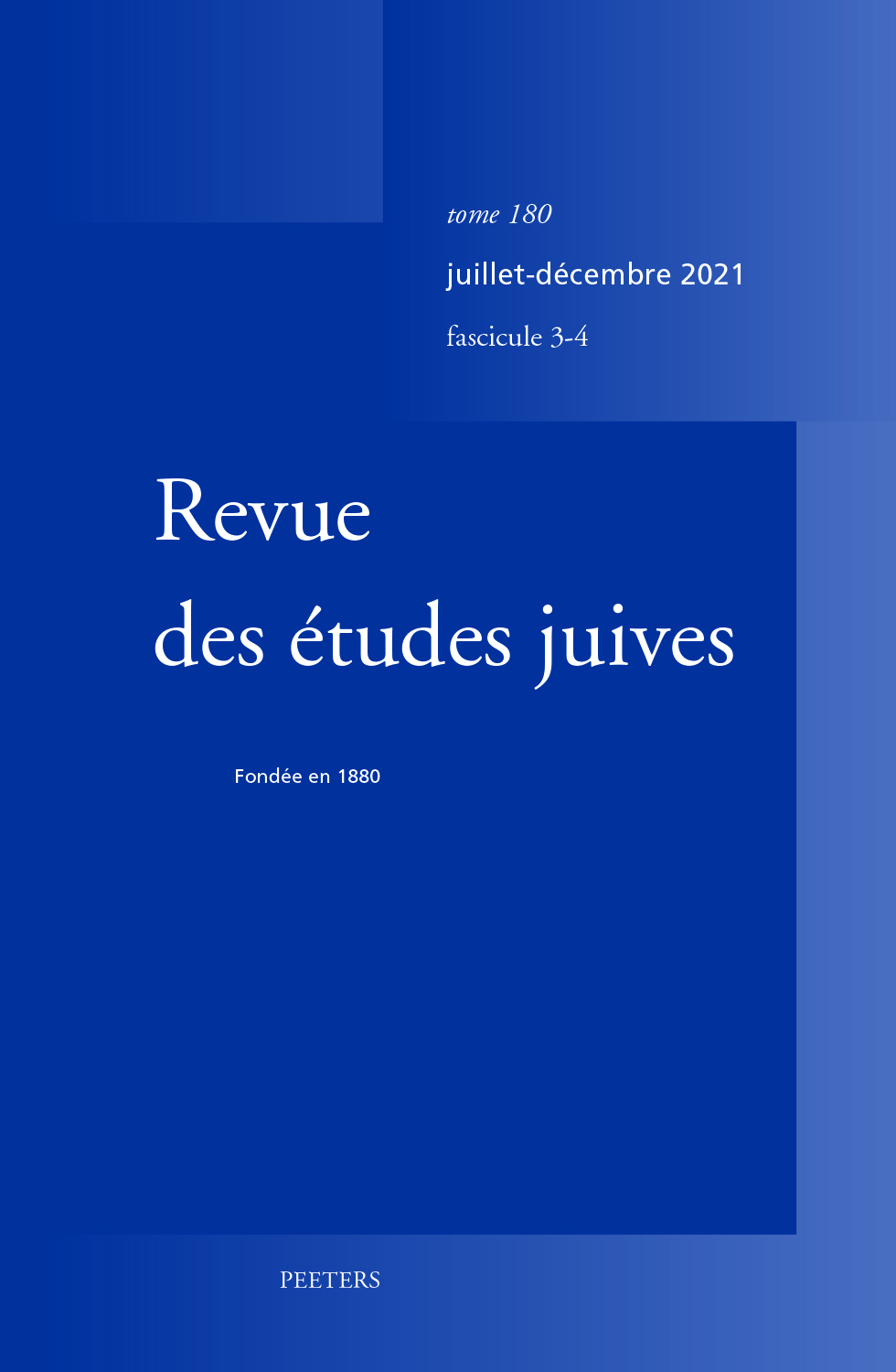 previous article in this issue previous article in this issue | next article in this issue  |

|
Document Details : Title: The Christiani's Rule over Israel during the Jewish War: Tacitus' Fragment 2 and Histories 5.13, Suetonius Vespasian 4.5, and the Coins of the Jewish War Author(s): LAUPOT, Eric Journal: Revue des Études Juives Volume: 162 Issue: 1-2 Date: janvier-juin 2003 Pages: 69-96 DOI: 10.2143/REJ.162.1.249 Abstract : Il a été démontré autre part que les sectateurs de celui qui, chez Tacite, est désigné comme Christus (i.e. les christiani ou Nazoréens) ont joué un rôle essentiel dans la Guerre Juive contre Rome de 66-73 et que c'est en grande partie pour écraser ces christiani et leur mouvement que les armées romaines ont détruit le Second Temple. L'article étudie, à partir de données diverses, certaines implications de cette découverte: 1) les Nazoréens étaient très vraisemblablement en charge de l'ensemble des Juifs, et pas uniquement du Temple, durant la Guerre Juive; 2) les christiani de Tacite étaient sans doute la secte historique dont procède, dans le Nouveau Testament, celle des Cristianoi; 3) L'homme qui est désigné sous le nom de Chrestus chez Suétone était un roi nazoréen bien connu; 4) Tacite avait raison d'associer les christiani au Grand Incendie de Rome qui eut lieu en 64, ce qu'il est le seul à faire parmi les historiens antiques; 5) Un autre nom du mouvement nazoréen était «la Voie»; 6) Antérieurement au Grand Incendie, les Gentils de Rome avaient fait l'objet, de la part des Nazoréens, d'une activité prosélyte importante et couronnée de succès; 7) Les Nazoréens ne sont pas à l'origine du Grand Incendie (la logique interne confirme ici les apparences); 8) L'Église paulinienne primitive était loyale à l'égard de Rome et rejetait les christiani opposés à Rome: si le gouvernement central n'a pas persécuté l'Église avant 270, c'est sans doute parce que le Christianisme était considéré comme un contrepoids à l'activité prosélyte des Nazoréens (et d'autres, potentiellement) parmi les esclaves et les classes inférieures. It has been demonstrated elsewhere that the ideological followers of the man referred to in Tacitus Annals as Christus (i.e., the christiani or Nazoreans) were major participants in the Jewish War against Rome of 66-73 CE and that the Roman army destroyed the Second Temple in Jerusalem in 70 CE in large part to crush the christiani and their anti-Roman movement. This paper discusses further implications of these findings, including: (1) evidence that the Nazoreans were most likely in charge of the entire Jewish state, not just the Temple, during the Jewish War (2) additional confirmation that Tacitus’ Jewish-led christiani were indeed the historical sect upon which the sect of Cristianoi of the New Testament were partially modeled, (3) the deduction that the man referred to as Chrestus in Suetonius Claudius 25.4 had been a well-known Nazorean king, (4) further confirmation that Tacitus, alone among ancient historians, was correct in associating the christiani with the Great Fire of Rome in 64, (5) confirmation that an alternate name for the Nazorean movement was “the Way,” (6) evidence that there had been successful mass proselytizing of Gentiles in Rome by the Nazoreans prior to the Great Fire, (7) logical inferences supporting a valid prima facie argument that the Nazoreans did not set the Great Fire, and (8) clear indications that because the early Pauline Church was loyal to Rome and did not consider the anti-Roman christiani to be of their faith, the central government in Rome therefore did not persecute the Church until 250 CE, presumably because Rome considered Christianity to be a counterweight to Nazorean (and other potentially) subversive proselytizing among the slaves and lower classes. |
|
